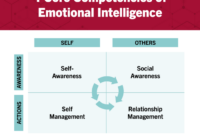In the realm of business, data has become the lifeblood of decision-making. Business intelligence automation is the key to unlocking the full potential of this data, empowering organizations to make smarter, faster, and more informed choices.
Business intelligence automation is streamlining the tasks of business intelligence analysts, enabling them to focus on more strategic initiatives. With automated data collection, analysis, and reporting, analysts can spend less time on manual tasks and more time providing valuable insights to decision-makers.
To succeed in this evolving field, business intelligence analysts must possess a strong understanding of business intelligence analyst job requirements , including data analysis techniques, programming languages, and business acumen. As business intelligence automation continues to advance, the role of the business intelligence analyst will only become more critical in driving data-driven decision-making.
This transformative technology automates the processes of collecting, analyzing, and visualizing data, providing businesses with real-time insights into their operations, customers, and markets.
Business Intelligence Automation Overview

Business intelligence (BI) is the process of collecting, analyzing, and interpreting data to make better business decisions. BI automation is the use of software to automate these tasks, which can save time and improve accuracy.
Business intelligence automation can help you make better decisions by providing you with real-time data and insights. This can be especially helpful in today’s competitive business environment, where you need to be able to adapt quickly to changing market conditions.
By automating your business intelligence processes, you can free up your time to focus on other strategic initiatives. You can also gain a competitive advantage by leveraging business artificial intelligence to automate your business intelligence processes. This can help you to improve your decision-making, increase your efficiency, and reduce your costs.
There are many different types of BI automation tools available, each with its own capabilities. Some of the most common types include:
- Data integration tools: These tools help to connect data from different sources into a single, unified view.
- Data analysis tools: These tools help to analyze data and identify trends and patterns.
- Data visualization tools: These tools help to create visual representations of data, such as charts and graphs.
- Reporting tools: These tools help to create reports that can be used to communicate insights to decision-makers.
Benefits of Business Intelligence Automation

There are many benefits to automating BI processes, including:
- Improved efficiency: BI automation can save time by automating repetitive tasks, such as data collection and analysis.
- Improved accuracy: BI automation can help to improve accuracy by eliminating human error.
- Improved decision-making: BI automation can help to improve decision-making by providing timely and accurate insights into data.
Here are a few examples of how businesses have successfully implemented BI automation:
- A retail company used BI automation to improve its inventory management. The company was able to reduce its inventory by 15% and increase its sales by 10%.
- A manufacturing company used BI automation to improve its quality control. The company was able to reduce its defect rate by 20%.
- A financial services company used BI automation to improve its risk management. The company was able to reduce its risk exposure by 15%.
Challenges of Business Intelligence Automation
There are also some challenges to implementing BI automation, including:
- Data integration issues: It can be difficult to integrate data from different sources into a single, unified view.
- Data quality concerns: The quality of data can impact the accuracy of BI insights.
- The need for skilled professionals: BI automation requires skilled professionals to implement and manage.
Here are a few ways to overcome these challenges:
- Data integration issues: Use a data integration tool to help connect data from different sources.
- Data quality concerns: Implement data quality processes to ensure that data is accurate and complete.
- The need for skilled professionals: Invest in training and development for your BI team.
Trends and Future of Business Intelligence Automation

The future of BI automation is bright. As data continues to grow in volume and complexity, BI automation will become increasingly important for businesses to make sense of their data and make better decisions.
Business intelligence automation streamlines data analysis, providing real-time insights that inform decision-making. Unlike business analytics, which focuses on descriptive and predictive analysis,
business intelligence automation empowers you to automate routine tasks and generate actionable insights. Learn more about the differences between business analytics vs business intelligence to leverage these tools effectively for your business.
Some of the trends that are shaping the future of BI automation include:
- The rise of artificial intelligence (AI) and machine learning (ML): AI and ML are being used to develop new BI automation tools that are more powerful and easier to use.
- The increasing popularity of cloud-based BI solutions: Cloud-based BI solutions are becoming more popular because they are more affordable and easier to implement than on-premises solutions.
- The growing demand for self-service BI tools: Self-service BI tools are becoming more popular because they allow business users to access and analyze data without the need for IT support.
End of Discussion: Business Intelligence Automation
As businesses continue to navigate the complexities of the modern marketplace, business intelligence automation will become an indispensable tool for staying ahead of the competition. By harnessing the power of data and automation, organizations can unlock new levels of efficiency, innovation, and growth.




